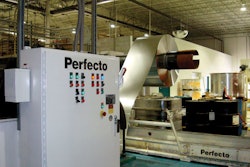
Sterling Anthony, CPP
Packaging constitutes a cost; however, so does everything else incorporated into consumer packaged goods. The cost of the packaging can exceed that of its contents, and even when it doesn’t, can account for a sizable percent of the combined total. Consequently, managing packaging costs is good business practice, with cost-cutting being a central component. Besides, depending on margins, increased profits can be achieved easier from cost-cutting than from increased sales.
It’s essential that a user company know what the cost-drivers are for its packaging. It gives direction to cost-cutting efforts and spares the company from going after little fish while the big ones swim merrily by.
Cost-cutting should not be undertaken haphazardly, but strategically. Whereas company-specific factors should be given their due, there are other factors that lend themselves to any cost-cutting strategy.
Keep performance requirements at the forefront
Determine what the packaging is required to do, then seek to fulfill those requirements cost-effectively.
The easiest aspect of cost-cutting is finding a cheaper price; however, “cutting to the bone” can be indiscriminant surgery that slices muscle, in addition to fat. Instead, pursue value, the ratio of benefits-to-costs.
There is no economy to paying a lower price if the differential is more than offset by poor packaging performance. In acknowledgement, what’s listed on an invoice should not be the single focus of cost-cutting. A low price can be costly.
It might seem counterintuitive, but a higher price can yield lower systems costs. Higher-priced packaging can be justified if, for example, the current packaging lacks the required shelf-impact. Another justifying deficiency is unsatisfactory performance on the packaging line, due to slower filling speeds, high scrap, high rejects, etc.
Other examples are citable, but here is the principle: determine all that is required of the packaging; rank the requirements (in preparation for the inevitable trade-offs); then, seek to fulfill the requirements at a sustainably low systems cost.
Keep options open
Supplier relations should be partnerships, not marriages. The mutual respect and cooperation upon which good partnerships are founded should be honored; nonetheless, a user company should let it be known that there are other suitors in the wings. There is nothing as effective as competition at incentivizing suppliers to provide their best prices and supporting services.
That’s not to say that the supplier should do all of the lifting. The user company should provide structure, so that cost-cutting does not veer from the relevant. One way is to identify specific tactics through which the strategy is executed. Of the many possibilities, here are a few:
• Reduce. Take out material, thereby reducing the weight of the packaging. There are practical limits that, if exceeded, cause problems; as examples, anorexic packages can topple on conveyor belts, deform during filling, or even prove too flimsy for convenient handling by the consumer.
• Eliminate. Get rid of it altogether. A bottle sans carton, a shipping carton without partitions, and a label with fewer colors are examples. Note, however, that it might be necessary to strengthen the remaining packaging, in compensation, which is okay, as long as there is a systems cost-savings.
• Modify. (A catch-all category for changes not specific enough to fall under either of the two preceding.) Change the packaging into a different version of its former self. Shape and size, for instance, can be modified to create a better packaging-to-product ratio. The tactic can be combined with product modification, as is the case with concentrated formulas.
• Substitute. Replace something with something else. Plastic replaces glass, for example, or one type of plastic replaces another. A shipping carton of a lower Mullen Test replaces one of a higher test.
Start at the beginning
The maximum flexibility in cost-savings is enjoyed at the earliest stages, namely conception and design. Too often, in the adrenaline intoxication induced by a new project, cost-savings is not the driving concern. After specifications have been drafted, prototypes rendered, trials performed, and commercialization achieved, cost-savings come with greater expenditures in time, effort, and costs.
But aren’t cost parameters a part of project work? Yes, but often they are budgetary, rather than forward-thinking and reflective of the many factors that go into the cost-effectiveness of the packaging, once it’s in use.
It’s easier and less disruptive to change a specification when it’s a matter of erasure and no physical packaging yet exists. For every new project, there should be a team member asking, “What will the packaging cost us, from a systems perspective down the line, and how can we optimize our cost at the front-end?”
Never let up
Cost-savings should be a constant pursuit, and not just subject to the whims of the economy. Granted, in recessionary times belt-tightening might go a notch or two inward; however, even in better times, cost-savings should not be done lackadaisically.
Accountability is the key. Specific goals should be set on an annual basis and progress closely monitored. Consistency has the added benefit of establishing the mindset throughout the company and to suppliers that cost-savings is a high priority.
Practice inventory control
The costs associated with the ordering and carrying of inventory should be balanced for savings. It’s one thing for a user company to contractually guarantee a supplier a volume of business that generates economies of scale, which, in turn, allow lower pricing. It’s another thing altogether to unknowingly forsake a portion of those savings through poor inventory control.
Funds tied up in inventory and the warehousing of same carry real costs. So, too, do the risks of inventory damage and obsolescence. It therefore behooves a user company to get the supplier to carry the inventory and to bill upon shipping.
An alternative is just-in-time delivery. What is not always appreciated, however, is that the feasibility of JIT resides in receiving shipments that reliably can go from dock to plant floor. The supplier’s quality-assurance must be accordingly tight, preferably certified through an auditing process.
As for savings through the ordering process, computerized systems that eliminate paper work and even automatically place an order in response to a particular trigger are increasingly becoming a part of user-vendor relations.
Set high expectations
User companies should not be too easily satisfied with supplier performance. Assume a situation wherein a supplier scores 95% each in delivering orders: on-schedule; in-full; without errors; and, without defects---four critical criteria. A supplier who hasn’t done the math might grade such performance highly, not realizing that it equates to an overall 81%. If that same supplier rises to 98% on each criterion, the overall score jumps to 92%. That difference translates into cost-savings in multiple areas of the user’s operations.
A user company that is complacent over what ostensibly is decent performance by a supplier not only is forgoing cost-savings, but also is leaving itself vulnerable to the encroachments of competitors that are more demanding of their suppliers.
Reward high performers
A company should reward its best suppliers, naturally, through retention of business, if not through an increase in business. But, not to be minimized is the additional value of personal recognition. How meaningful it would be to a supplier—accustomed to dealing with the Procurement Department (no knock against them)—to receive an acknowledging letter from the CEO of the user company. An alternative is a formal awards program.
In all, packaging is a multifaceted tool, capable of delivering a variety of benefits to the user company; nonetheless, it does so at a cost, and therefore is subject to cost-cutting. Make sure that it’s done strategically.
Sterling Anthony is a consultant, specializing in the strategic use of marketing, logistics, and packaging. His contact information is: 100 Renaissance Center-176, Detroit, MI 48243; 313-531-1875 office; 313-531-1972 fax; [email protected].
It’s essential that a user company know what the cost-drivers are for its packaging. It gives direction to cost-cutting efforts and spares the company from going after little fish while the big ones swim merrily by.
Cost-cutting should not be undertaken haphazardly, but strategically. Whereas company-specific factors should be given their due, there are other factors that lend themselves to any cost-cutting strategy.
Keep performance requirements at the forefront
Determine what the packaging is required to do, then seek to fulfill those requirements cost-effectively.
The easiest aspect of cost-cutting is finding a cheaper price; however, “cutting to the bone” can be indiscriminant surgery that slices muscle, in addition to fat. Instead, pursue value, the ratio of benefits-to-costs.
There is no economy to paying a lower price if the differential is more than offset by poor packaging performance. In acknowledgement, what’s listed on an invoice should not be the single focus of cost-cutting. A low price can be costly.
It might seem counterintuitive, but a higher price can yield lower systems costs. Higher-priced packaging can be justified if, for example, the current packaging lacks the required shelf-impact. Another justifying deficiency is unsatisfactory performance on the packaging line, due to slower filling speeds, high scrap, high rejects, etc.
Other examples are citable, but here is the principle: determine all that is required of the packaging; rank the requirements (in preparation for the inevitable trade-offs); then, seek to fulfill the requirements at a sustainably low systems cost.
Keep options open
Supplier relations should be partnerships, not marriages. The mutual respect and cooperation upon which good partnerships are founded should be honored; nonetheless, a user company should let it be known that there are other suitors in the wings. There is nothing as effective as competition at incentivizing suppliers to provide their best prices and supporting services.
That’s not to say that the supplier should do all of the lifting. The user company should provide structure, so that cost-cutting does not veer from the relevant. One way is to identify specific tactics through which the strategy is executed. Of the many possibilities, here are a few:
• Reduce. Take out material, thereby reducing the weight of the packaging. There are practical limits that, if exceeded, cause problems; as examples, anorexic packages can topple on conveyor belts, deform during filling, or even prove too flimsy for convenient handling by the consumer.
• Eliminate. Get rid of it altogether. A bottle sans carton, a shipping carton without partitions, and a label with fewer colors are examples. Note, however, that it might be necessary to strengthen the remaining packaging, in compensation, which is okay, as long as there is a systems cost-savings.
• Modify. (A catch-all category for changes not specific enough to fall under either of the two preceding.) Change the packaging into a different version of its former self. Shape and size, for instance, can be modified to create a better packaging-to-product ratio. The tactic can be combined with product modification, as is the case with concentrated formulas.
• Substitute. Replace something with something else. Plastic replaces glass, for example, or one type of plastic replaces another. A shipping carton of a lower Mullen Test replaces one of a higher test.
Start at the beginning
The maximum flexibility in cost-savings is enjoyed at the earliest stages, namely conception and design. Too often, in the adrenaline intoxication induced by a new project, cost-savings is not the driving concern. After specifications have been drafted, prototypes rendered, trials performed, and commercialization achieved, cost-savings come with greater expenditures in time, effort, and costs.
But aren’t cost parameters a part of project work? Yes, but often they are budgetary, rather than forward-thinking and reflective of the many factors that go into the cost-effectiveness of the packaging, once it’s in use.
It’s easier and less disruptive to change a specification when it’s a matter of erasure and no physical packaging yet exists. For every new project, there should be a team member asking, “What will the packaging cost us, from a systems perspective down the line, and how can we optimize our cost at the front-end?”
Never let up
Cost-savings should be a constant pursuit, and not just subject to the whims of the economy. Granted, in recessionary times belt-tightening might go a notch or two inward; however, even in better times, cost-savings should not be done lackadaisically.
Accountability is the key. Specific goals should be set on an annual basis and progress closely monitored. Consistency has the added benefit of establishing the mindset throughout the company and to suppliers that cost-savings is a high priority.
Practice inventory control
The costs associated with the ordering and carrying of inventory should be balanced for savings. It’s one thing for a user company to contractually guarantee a supplier a volume of business that generates economies of scale, which, in turn, allow lower pricing. It’s another thing altogether to unknowingly forsake a portion of those savings through poor inventory control.
Funds tied up in inventory and the warehousing of same carry real costs. So, too, do the risks of inventory damage and obsolescence. It therefore behooves a user company to get the supplier to carry the inventory and to bill upon shipping.
An alternative is just-in-time delivery. What is not always appreciated, however, is that the feasibility of JIT resides in receiving shipments that reliably can go from dock to plant floor. The supplier’s quality-assurance must be accordingly tight, preferably certified through an auditing process.
As for savings through the ordering process, computerized systems that eliminate paper work and even automatically place an order in response to a particular trigger are increasingly becoming a part of user-vendor relations.
Set high expectations
User companies should not be too easily satisfied with supplier performance. Assume a situation wherein a supplier scores 95% each in delivering orders: on-schedule; in-full; without errors; and, without defects---four critical criteria. A supplier who hasn’t done the math might grade such performance highly, not realizing that it equates to an overall 81%. If that same supplier rises to 98% on each criterion, the overall score jumps to 92%. That difference translates into cost-savings in multiple areas of the user’s operations.
A user company that is complacent over what ostensibly is decent performance by a supplier not only is forgoing cost-savings, but also is leaving itself vulnerable to the encroachments of competitors that are more demanding of their suppliers.
Reward high performers
A company should reward its best suppliers, naturally, through retention of business, if not through an increase in business. But, not to be minimized is the additional value of personal recognition. How meaningful it would be to a supplier—accustomed to dealing with the Procurement Department (no knock against them)—to receive an acknowledging letter from the CEO of the user company. An alternative is a formal awards program.
In all, packaging is a multifaceted tool, capable of delivering a variety of benefits to the user company; nonetheless, it does so at a cost, and therefore is subject to cost-cutting. Make sure that it’s done strategically.
Sterling Anthony is a consultant, specializing in the strategic use of marketing, logistics, and packaging. His contact information is: 100 Renaissance Center-176, Detroit, MI 48243; 313-531-1875 office; 313-531-1972 fax; [email protected].


























